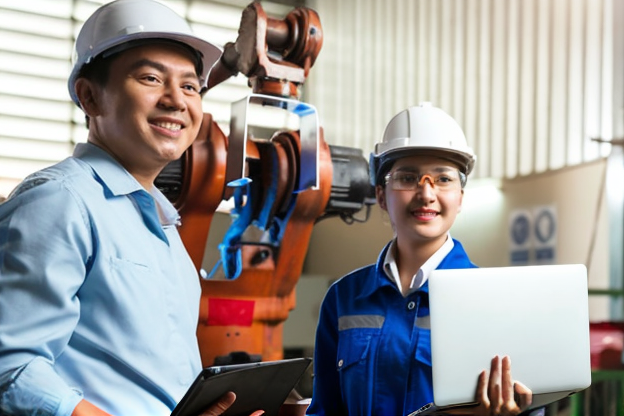Understanding the Safety Aspects of CNC Machining+ View more
The Hidden Hazards of CNC Operations
While CNC machining is not intrinsically hazardous, the machinery involved operates at high speeds, with moving parts that could pose risks if not properly managed. The equipment also processes materials that may generate harmful dust and debris. Workers exposed to these elements without adequate protection may face potential health issues. Therefore, it's crucial to recognize and mitigate the hidden dangers inherent in CNC operations to prevent workplace accidents and long-term health problems.
Guardrails and Safety Measures: The First Line of Defense
The integration of physical barriers such as guardrails and safety gates is a fundamental step in CNC machine safety. These measures prevent accidental contact with the machine's moving parts, significantly reducing the risk of injury. Warning signs should also be displayed prominently to remind workers of potential hazards and enforce the importance of safety protocols. These barriers serve as the first line of defense against the mechanical threats posed by CNC machinery.
Personal Protective Equipment: Shielding Workers from Harm
Personal Protective Equipment (PPE) is vital for workers operating or working near CNC machines. Safety glasses protect eyes from flying debris, while earplugs or earmuffs shield the ears from the high decibel levels produced by the machinery, preventing long-term hearing damage. Gloves and protective clothing are also essential to guard against cuts and abrasions. PPE acts as a critical shield for workers, safeguarding them from the immediate physical dangers present in the machining environment.
Training: The Bedrock of CNC Machine Safety
Proper training is the bedrock of a safe CNC machining environment. Workers must be thoroughly educated on the correct operating techniques and safety procedures. This knowledge is the key to avoiding errors that could result in serious accidents. Comprehensive training programs ensure that workers are not only aware of how to operate the machinery safely but also understand the potential risks and how to respond in case of an emergency.
Maintenance: The Ongoing Pursuit of Operational Safety
Regular maintenance and servicing of CNC machines are non-negotiable aspects of operational safety. A well-maintained machine is less likely to malfunction, which in turn reduces the chances of workplace accidents. Scheduled checks and services ensure that all components of the CNC machines are functioning correctly and safely, thus maintaining the integrity of the manufacturing process and the protection of the workforce.
Ventilation and Cleanliness: Protecting Respiratory Health
Good ventilation systems are essential in areas where CNC machines operate. These systems help to disperse the dust and particulate matter produced during the machining process, preventing it from accumulating and affecting the respiratory health of workers. Regular cleaning schedules should also be implemented to manage waste and minimize the presence of potentially harmful materials in the work environment. By prioritizing air quality and cleanliness, employers can protect their workers from the unseen dangers that lurk in the workshop air.
Conclusion
The advent of CNC machining has revolutionized the manufacturing sector, yet it brings with it a responsibility to prioritize the health and safety of workers. Understanding and implementing the safety measures discussed can transform the workshop from a hazard zone to a safe and productive space. It is the amalgamation of these practices that will ensure the welfare of workers while harnessing the full potential of CNC technology.

